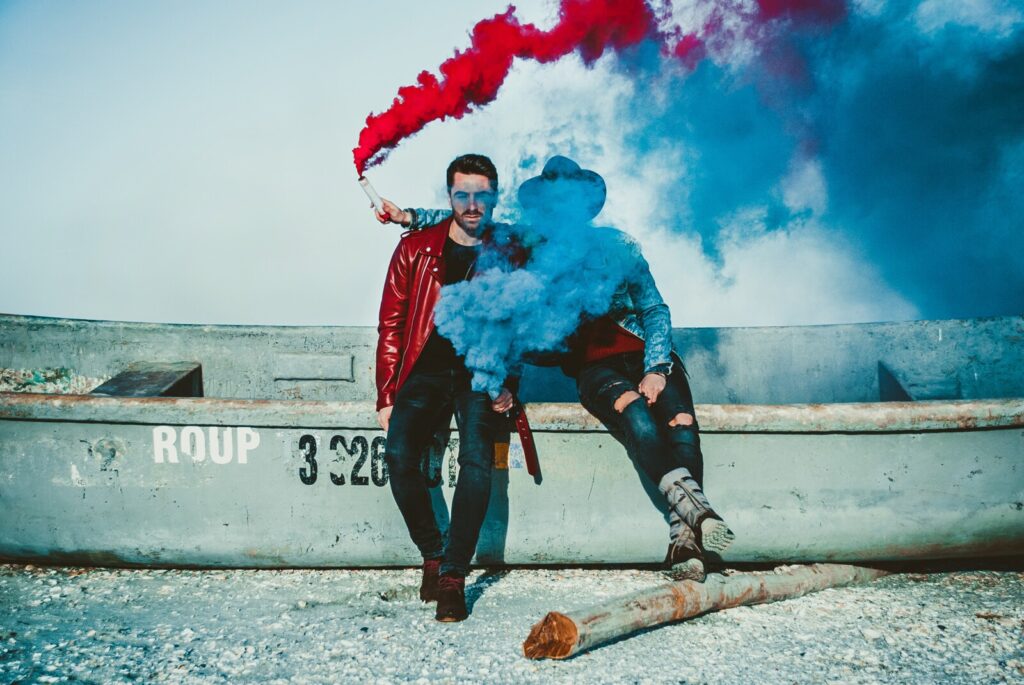
Are you an independent artist looking to collaborate with others and expand your audience? One powerful way to achieve this is by having a collaboration on your song with a feature artist. But what exactly does a collaboration with a feature artist entail and how can you do it effectively?
Featuring an artist on your song involves inviting another musician to contribute vocals, instruments, or other elements to your recording. This can add new dimensions to your music and introduce your audience to new sounds and styles. Collaborations have been a popular way for musicians to showcase their talent and reach new audiences for decades, and today’s digital landscape has made it easier than ever for independent artists to collaborate and create together.
In this article, we’ll explore the benefits of a collaboration with a feature artist, how to choose the right artist to feature, how to approach them, legal and financial considerations, and how to make the most of the collaboration. Whether you’re a seasoned musician or just starting out, this guide will help you navigate the exciting and sometimes challenging world of collaborative music-making. So let’s get started!
The Benefits of Collaboration
Collaboration can bring many benefits to independent artists, from expanding your creative horizons to increasing your exposure to new audiences. Here are some of the key advantages of collaborating with other artists:
1. Fresh Perspectives
Collaborating with another artist can bring new ideas and perspectives to your music. They may have a different approach to songwriting or a unique style of playing an instrument, which can help you break out of your comfort zone and create something fresh and exciting.
2. Access to New Audiences
By featuring another artist on your song, you can tap into their fanbase and gain exposure to new audiences. This can help you expand your own following and reach people who might not have discovered your music otherwise.
3. Networking Opportunities
Collaborating with other artists can also lead to valuable networking opportunities. You may meet industry professionals or other musicians who can help you further your career, or even form lasting creative partnerships.
4. Shared Resources and Skills
When you have a collaboration with a feature artist, you can pool your resources and skills to create something greater than the sum of its parts. They may have access to recording equipment, video production skills, or connections to other industry professionals that can help take your music to the next level.
5. Fun and Excitement
Last but not least, a collaboration with a feature artist can be a lot of fun! It can add an element of excitement to your music-making process and create a sense of community and a lot of positive energy.
By understanding the benefits of collaboration, you can better appreciate why featuring an artist on your song can be a smart move for independent musicians looking to widen their reach and enhance their music. This is an important part of thriving as a musician. If you are interested in developing more skills to help yourself thrive as an independent artist; read our guide. It will help!
In the next section, we’ll explore how to choose the right artist to work with and approach them for a collaboration.
Choosing the Right Artist
Collaborating with another artist can be an exciting opportunity to expand your sound, reach new audiences, and gain new perspectives on your music. However, choosing the right collaborator is essential to ensuring a successful partnership. Here are some key factors to consider when selecting an artist to feature on your song:
Complementary Styles:
Look for an artist whose style and sound complement your own. This doesn’t mean that they have to be exactly like you, but rather that their approach to music is compatible with yours. For example, if you’re a singer-songwriter with an acoustic guitar, you might look for a collaborator who has a similar approach to songwriting but plays a different instrument or has a different vocal style.
Shared Vision:
Make sure that you and your collaborator have a shared vision for the project. This means that you’re both clear on the goals and direction of the collaboration. Communication is key here – make sure that you discuss your expectations and ideas with your collaborator before you begin working together.
Availability:
Consider the other artist’s availability and schedule when selecting a collaborator. You want to make sure that you can work together effectively and meet your desired timeline. This doesn’t mean that you have to work on the project full-time – you can always work on it around your other commitments – but it’s important to be clear about how much time you can dedicate to the project.
Professionalism:
Look for an artist who is reliable, punctual, and professional in their approach to music-making. This will help ensure a smooth and successful collaboration. You want to work with someone who takes the project seriously and is committed to creating the best possible result.
By considering these factors when selecting a collaborator, you can increase your chances of finding the right partner for your project. Once you’ve identified a potential collaborator, the next step is to approach them and pitch your project. In the next section, we’ll explore some strategies for making a compelling pitch and negotiating the terms of your collaboration.
Approaching and Pitching Your Collaboration

Approaching another artist and pitching a collaboration can be a little bit nerve racking, but with the right preparation and approach, it can lead to a successful partnership that the both of you can benefit from. Here are some tips to help you make a compelling pitch:
- Start with a Personal Connection
- Highlight the Benefits
- Be Specific
- Be Flexible
- Discuss the Logistics
Start with a Personal Connection
Start by establishing a personal connection with the artist. Before you dive into discussing the project, take the time to establish a rapport and find common ground. This could be something as simple as mentioning how much you admire their work or sharing a similar music taste. Making a personal connection can help build trust and create a foundation for a positive collaboration.
Highlight the Benefits
Highlight the benefits of collaborating with you. Why should the other artist work with you? What unique skills or resources can you bring to the table? Consider the benefits of collaboration, such as exposure to new audiences, creative growth opportunities, and shared resources and skills. Emphasizing these benefits can make your pitch more compelling and increase the chances of the other artist agreeing to work with you.
Be Specific
Be specific about your vision for the project. Outline your goals and vision for the collaboration, and be specific about what you’re asking of the other artist. This includes factors such as the genre of the song, the style of production, and the lyrics. Being specific can help the other artist understand your vision and determine if they’re a good fit.
Be Flexible
Be flexible and open to compromise. Collaboration is a two-way street, and it’s important to be open to the other artist’s ideas and feedback. Be willing to compromise on certain aspects of the project, and be open to new ideas and creative input. Remember, the goal is to create a collaborative work that both artists are proud of.
Discuss the Logistics
Once you’ve established interest and enthusiasm from the other artist, it’s time to discuss the logistics of the collaboration. This includes factors such as splits, credit, and timelines. Negotiating these details can be tricky, but by approaching the conversation with a collaborative mindset and clear communication, you can ensure a successful and mutually beneficial partnership.
When promoting and releasing your collaboration, it’s important to have a plan in place. This includes marketing and promotion strategies, as well as a clear plan for releasing and distributing the song. Consider factors such as the target audience, the best platforms for promotion, and the timeline for release. It’s also important to establish clear expectations for both artists when it comes to marketing and promotion efforts.
One means to promote is to get your song on the radio. Here is a link to a guide for doing just that. Have to it!
Promoting and Releasing Your Collaboration
Releasing a collaboration can be a very exciting. To strive for the best outcome, it’s important to have a solid plan for promotion and distribution. Here are some tips to help you:
- Use Social Media: Social media platforms such as Instagram, Twitter, and TikTok can be powerful tools for promoting your collaboration and connecting with new fans. Share teasers, behind-the-scenes content, and other promotional materials to generate excitement.
- Collaborate on Marketing: Work with the other artist to create marketing materials that showcase your collaboration, such as posters, flyers, and social media posts. This will help you reach a wider audience and increase engagement.
- Consider a Music Video: Music videos are a great way to visually showcase your collaboration and can help attract new fans. Work with a videographer to create a video that highlights your strengths and complements the song.
- Coordinate Your Release: Coordinate with the other artist and their team to ensure that you release your collaboration at the same time. This will help you maximize your reach and avoid conflicting schedules.
- Follow Up and Reflect: After your collaboration has been released, follow up with your fans and the other artist to gather feedback and reflect on your experience. This will help you learn and grow for future collaborations.
For help choosing the right kind of video to make to promote your music, Read this article!
By following these tips, you can successfully promote and release your collaboration and set the foundation for future creative partnerships.
Legal and Splits: Protecting Your Collaborative Efforts

Collaborations can be fun and exciting, but it’s important to approach them with a clear understanding of the legal and financial implications. One of the key aspects to consider is how songwriting credit and royalties will be split among the collaborators. While this can be a touchy subject, it’s important to have an honest conversation about it upfront to avoid any misunderstandings or conflicts down the line.
Here are some tips to help protect your collaborative efforts:
- Create a written agreement: It’s important to have a written agreement that outlines the terms of the collaboration, including the splits for songwriting credit and royalties. This can be a simple agreement that is signed by all parties involved, or a more detailed contract drafted by an attorney.
- Register your song with a performing rights organization (PRO): PROs such as ASCAP, BMI, and SESAC collect royalties for public performances of your music and distribute them to the appropriate parties. By registering your song with a PRO, you can ensure that everyone involved in the collaboration is properly credited and compensated.
- Consider hiring an attorney: If you’re unsure about the legal implications of a collaboration or need help drafting a contract, it may be worth consulting with an attorney who specializes in music law.
Collaborating with other artists can be a great way to expand your creative horizons and reach new audiences. By approaching collaborations with a clear understanding of the legal and financial implications, you can protect your efforts and ensure that everyone involved is properly credited and compensated.
After you have managed recruiting a feature artist, recording a great song, organizing splits, and running a purely genius promotional campaign. You may start thinking about just starting your own label. I mean… you’d certainly have been building skills. For more about starting a label read this guide. Good luck!
Conclusion
Collaborating with other artists can be an exciting and rewarding experience, but it’s important to approach it with a clear understanding of the process. In this article, we’ve explored what it means to feature an artist on your song and how to do it effectively. We’ve also discussed the importance of understanding the legal and financial implications of collaborations, including songwriting credit and royalties.
If you need help knowing how to get this new song released; read this article. It is helpful!
Whether you’re an independent artist just starting out or a seasoned pro looking to explore new creative avenues, a collaboration with a feature artist can be a great way to expand your horizons and connect with other like-minded individuals. By following the tips and strategies outlined in this article, you can approach collaborations with confidence and take your music to new heights.
